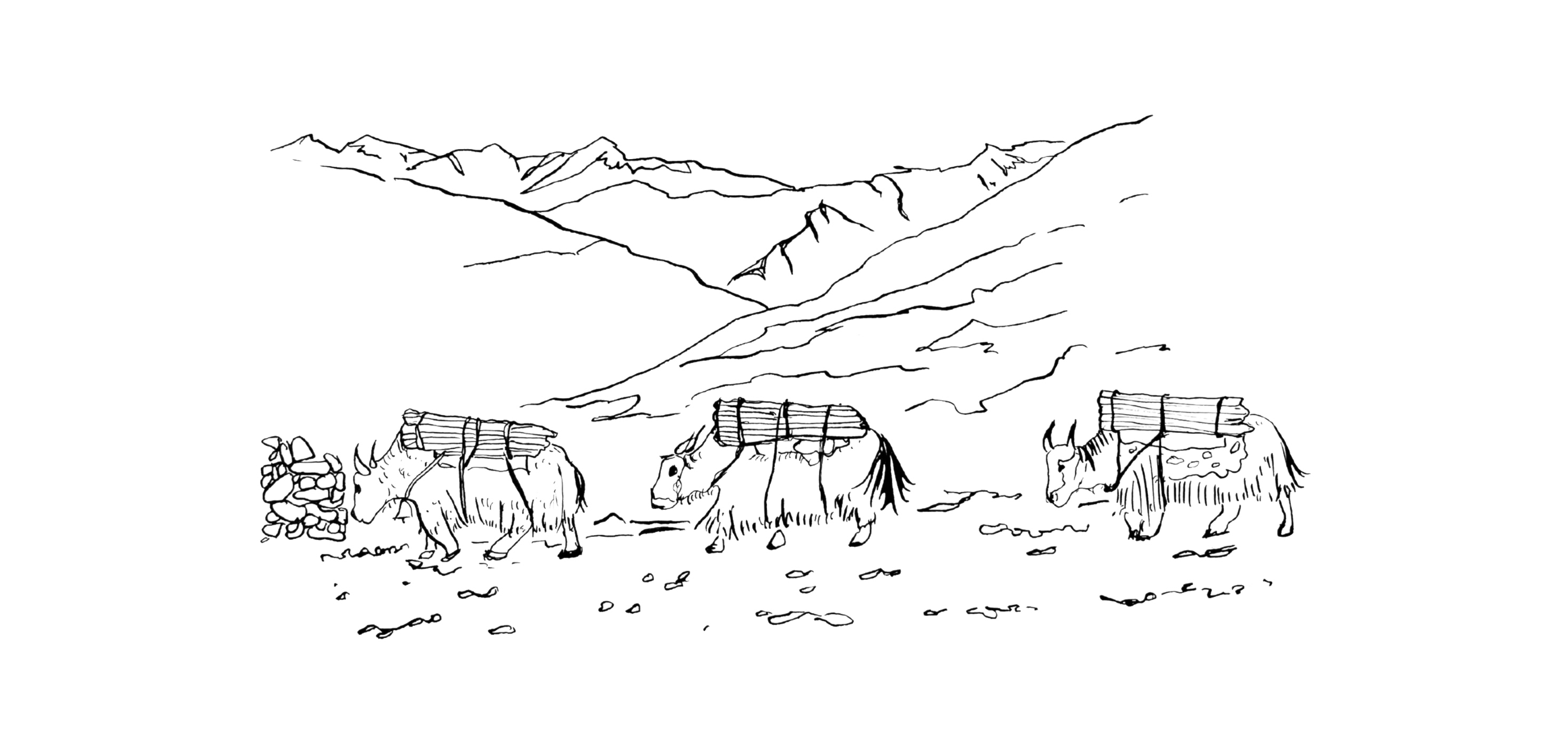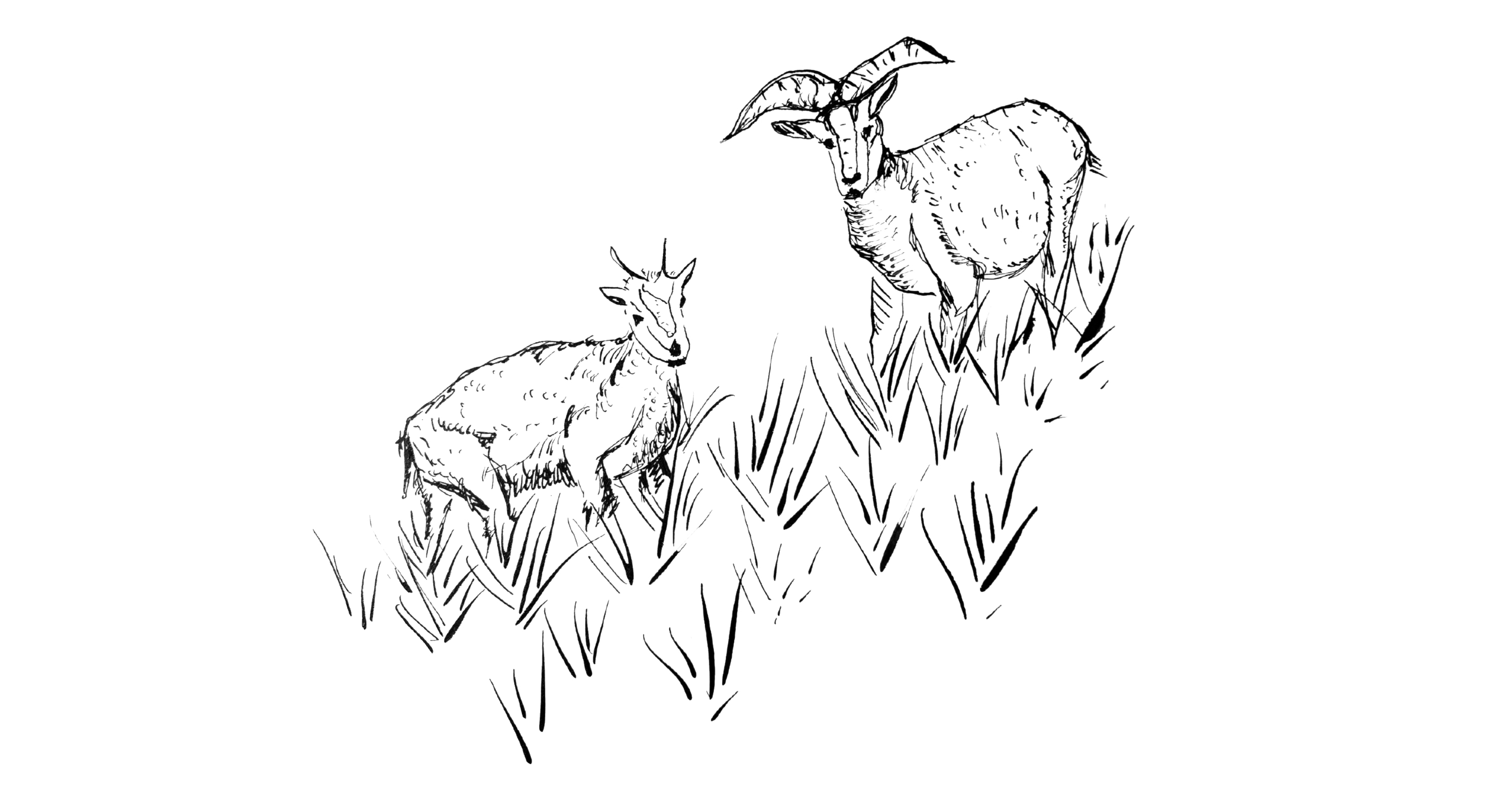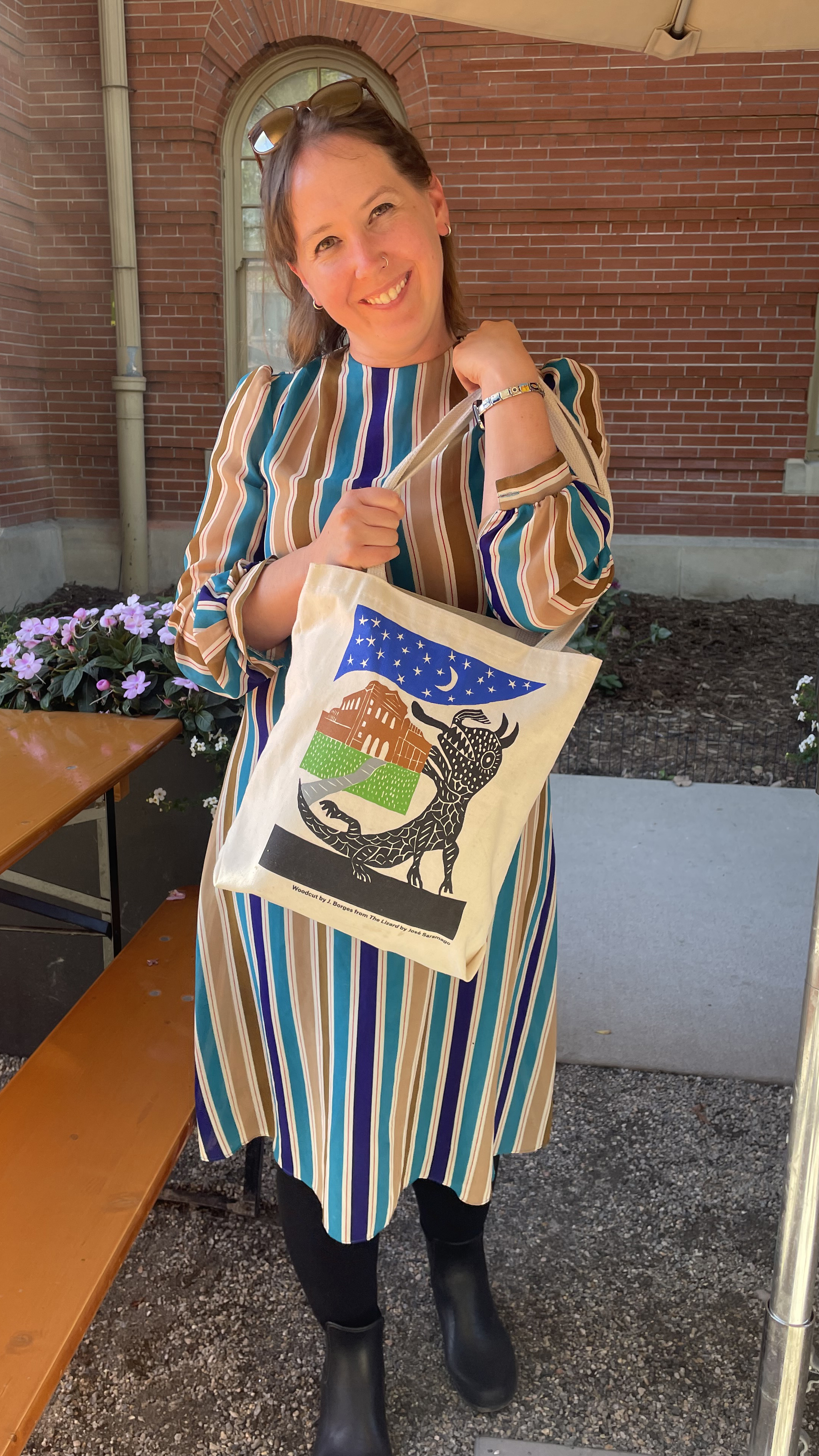To celebrate the publication of Che and Medicine: On the Social Role of Doctors, the latest addition to our Che Guevara Library, we're excited to share an excerpt from the text: a speech given by Ernesto Che Guevara at the Cuban Ministry of Public Health on August 19, 1960. The text as a whole — a collection of his writings on medicine, initially concieved by the author as a complete book, but unfortunately not completed in his lifetime — argues for a collectivized health system and the integration of every health worker into the revolutionary movement. The following speech is an excellent distillation of the book's overall thesis, and offers a compelling vision of Che's larger attempt to reconcile the health needs of the individual (and the doctor as individual relating to an individual patient) versus the health needs of the society as a whole.
Che Guevara’s passion for public health contributed to his a legacy of social medicine in Latin America, and this book explores and reveals his thoughts on the role of a doctor.
Features an introduction by Aleida Guevara March, MD, a Cuban physician who is the eldest daughter of four children born to Ernesto "Che" Guevara and his second wife, Aleida March
Before Ernesto Che Guevara became “Che,” before he traveled Latin America, before he joined Fidel in Cuba, he was a medical school student. In 1956 he wrote to his mother before leaving to go and join the guerilla expedition to Cuba: “My path seems to be slowly but surely diverging from that of clinical medicine, but not so far that I have lost my nostalgia for hospitals. What I told you about the professorship in physiology was a lie, but not a big one. It was a lie because I never planned to accept it, but the offer was real and there was a strong possibility that they were going to give it to me, as I had an interview and everything. Anyway, that’s all history. Saint Carlos [Karl Marx] has made a new recruit.”
He had started a book on the role of the doctor in Latin America, a work he fully intended to continue writing. It remained incomplete at the time of his death in Bolivia at the age of thirty-nine, just eleven years later.
ON REVOLUTIONARY MEDICINE
Speech given at the inauguration of a training course at the Ministry of Public Health on August 19, 1960.
Compañeros:
Although this modest ceremony is only one among hundreds held as the of Cuban people celebrate day by day their freedom and the advance of all their revolutionary laws, their advance along the road to total independence, I nevertheless find it interesting.
Almost everyone knows that I started my career as a doctor some years ago. And when I started off as a doctor, when I began to study medicine, the majority of the concepts I hold today as a revolutionary were absent from the storehouse of my ideals.
I wanted to succeed, as everybody wants to succeed. I dreamed about being a famous researcher. I dreamed of working tirelessly to achieve something that could really be put at the disposal of humanity, but that, at the same time, would be a personal triumph. I was, as we all are, a child of my environment.
Through particular circumstances, and perhaps also because of my character, after receiving my degree I set out to travel through Latin America and I got to know it intimately. Except for Haiti and the Dominican Republic, I have visited — in one way of another — all the other countries of Latin America. And in the way I traveled, first as a student and afterward as a doctor, I began to come into close contact with poverty, with hunger, with disease, with the inability to cure a child because of lack of resources, with the numbness that hunger and continued deprivation cause until a point is reached where a parent losing a child is an unimportant accident, as often happens among the embattled classes of our Latin American homeland. And I began to see that there was something that, at that time, seemed to me almost as important as being a famous researcher or making some substantial contribution to medical science, and that was helping those people.
But I continued being, as all of us always continue being, a child of my environment, and I wanted to help those people through my personal efforts. I had already traveled a lot — I was then in Guatemala, the Guatemala of Arbenz — and I had begun to make some notes to guide the conduct of a revolutionary doctor. I began to look into what I needed to be a revolutionary doctor.
However, the aggression came [in Guatemala], aggression unleashed by the United Fruit Company, the State Department, Foster Dulles — in reality, they're all the same thing — and the puppet they put in named Castillo Armas — that was his name. The aggression was successful, given that the people had not yet reached the level of [political] maturity the Cuban people have today. And one fine day, I, like so many others, took the road to exile, or at least I took the road of fleeing from Guatemala, since it was not my homeland.
Then I realized one fundamental thing: to be a revolutionary doctor or to be a revolutionary, there must first be a revolution. The isolated effort, the individual effort, the purity of ideals, the desire to sacrifice an entire lifetime to the noblest of ideals goes for naught if that effort is made alone, solitary, in some corner of Latin America, fighting against hostile governments and social conditions that do not permit progress. A revolution needs what we have in Cuba: an entire people mobilized, who have learned the use of arms and the practice of combative unity, who know what a weapon is worth and what the people's unity is worth.
And then we get to the heart of the problem that today lies ahead of us. We already have the right and even the obligation to be, before anything else, a revolutionary doctor, that is, a person who puts the technical knowledge of his profession at the service of the revolution and of the people. Then we come back to the earlier questions: How does one do a job of social welfare effectively? How does one reconcile individual effort with the needs of society?
We again have to recall what each of our lives was like, what each of us did and thought, as a doctor or in any other public health function, prior to the revolution. We have to do so with profound critical enthusiasm. And we will then conclude that almost everything we thought and felt in that past epoch should be filed away, and that a new type of human being should be created. And if each one of us is their own architect of that new human type, then creating that new type of human being — who will be the representative of the new Cuba — will be much easier.
It is good for you — those present, the residents of Havana — to absorb this idea: that in Cuba a new type of human being is being created, which cannot be entirely appreciated in the capital, but which can be seen in every corner of the country. Those of you who went to the Sierra Maestra on July 26 must have seen two absolutely unheard-of things: an army with picks and shovels, an army that takes the greatest pride in marching in the patriotic celebrations in Oriente Province with its picks and shovels ready, while the militia compañeros are marching with their rifles. But you must have also seen something much more important: You must have seen some children who by their physical stature appear eight or nine years old, but who nevertheless are almost all thirteen or fourteen. They are the most authentic children of the Sierra Maestra, the most authentic children of hunger and poverty in all its forms. They are the creatures of malnutrition.
In this small Cuba, with four or five television channels, with hundreds of radio stations, with all the advances of modern science, when those children arrived at school at night for the first time and saw the electric lights, they exclaimed that the stars were very low that night. Those children, whom some of you would have seen, are now learning in the collective schools, from the ABCs right up to learning a trade, right up to the very difficult science of being revolutionaries.
These are the new types of human beings born in Cuba. They are being born in isolated places, in remote points in the Sierra Maestra and also in the cooperatives and centers of work.
All that has a lot to do with the topic of our talk today: the integration of the doctor and every other medical worker into the revolutionary movement. Because the revolution's task — the task of training and nourishing the children, the task of educating the army, the task of distributing the lands of the old absentee landlords among those who sweated every day on that same land without reaping its fruit — is the greatest work of social medicine that has been done in Cuba.
The battle against disease should be based on the principle of creating a robust body — not creating a robust body through a doctor's artistic work on a weak organism, but creating a robust body through the world of the whole collectivity, especially the whole social collectivity.
One day medicine will have to become a science that serves to prevent diseases, to orient the entire public toward their medical obligations, and that intervention is only necessary in cases of extreme urgency to perform some surgical operation or to deal with something uncharacteristic of that new society we are creating.
The work that is today entrusted to the Ministry of Health, to all the institutions of this type, is to organize public health in such a manner that it aids the greatest possible number of people, that it prevents everything foreseeable related to diseases, and that it orients the people. But for the organizational task, as for all revolutionary tasks, what is required, fundamentally, is the individual. The revolution is not, as some claim, a standardizer of collective will, of collective initiative. To the contrary, it is a liberator of an individual's capacity.
What the revolution does do, however, is to orient that capacity. And our task today is to orient the creative talent of all the medical professionals toward the tasks of social medicine.
We are at the end of an era, and not only here in Cuba. Despite all that is said to the contrary and despite all the hopes of some people, the forms of capitalism we have known, under which we have been raised and have suffered, are being defeated throughout the world.
The monopolies are being defeated. Collective science every day registers new and important triumphs. And we have had the pride and the self-sacrificing duty of being the vanguard in Latin America of a liberation movement that began some time ago, in the other subjugated continents of Africa and Asia. And that very profound social change also demands very profound changes in the mentality of the people.
Individualism as such, as the isolated action of a person alone in a social environment, must disappear in Cuba. Individualism tomorrow should be the proper utilization of the whole person to the absolute benefit of the community. But even when all this is understood today, even when these things I am saying are comprehended, and even when everyone is willing to think a little about the present, about the past, and about what the future should be, changing the manner of thinking requires profound internal changes and helping bring about profound external changes, primarily social.
And those external changes are taking place in Cuba every day. One way of learning about this revolution, of getting to know the forces the people have within, forces that have been dormant for so long, is to visit every part of Cuba, visit the cooperatives and all the work centers being created. And one way of getting to the heart of the medical question is not only knowing, not only visiting these places, but also getting to know the people who make up these cooperatives and work centers. Go there and find out what diseases they have, what their ailments are, what extreme poverty they have lived in over the years, inherited from centuries of repression and total submission. The doctor, the medical worker, should then go to the heart of this new work, which is as a person among the masses, someone within the community.
Whatever happens in the world, by always being close to the patient, by knowing their psychology so deeply, by being the representative of those who come near pain and relieve it, the doctor always has a very important job, a job of great responsibility in social life.
Only a few months ago, it so happened here in Havana that a group of students, recently certified as doctors, did not want to go to the countryside and were demanding extra payment for going. From the viewpoint of the past it is most logical that this would occur; at least it seems that way to me, and I understand it perfectly. I simply remember that this was the way it was, the way it was regarded some years ago. Once more it is the gladiator in rebellion, the solitary fighter who wants to ensure a better future, better conditions, and to achieve recognition of the necessity of what he does.
But what would happen if it were not those kids — the majority of whose families could afford several years of study — who completed their courses and are now beginning to practice their profession? What if instead it was 200 or 300 peasants who had emerged, let's say by magic, from the university lecture halls?
What would have happened, simply, is that those peasants would have run immediately, and with great enthusiasm, to attend to their brothers and sisters. They would have requested posts with the most responsibility and the most work, in order to show that the years of study given them were not in vain. What would have happened is what will happen within six or seven years, when the new students, children of the working class and the peasantry, receive their professional degrees of whatever type.
But we should not view the future with fatalism and divide people into children of the working class or peasantry and counterrevolutionaries. Because that is simplistic, because it is not true, and because there is nothing that educates an honorable person more than living within a revolution.
Because none of us, none of the first group that arrived in the Granma, who established ourselves in the Sierra Maestra, and who learned to respect the peasant and the worker, living together with them — none of us had had a past as a worker or peasant. Naturally, there were those who had to work, who had known certain wants in their childhood. But hunger, true hunger — that none of us had known, and we began to know it — temporarily — during the two long years in the Sierra Maestra. And then many things became very clear.
We, who at the beginning severely punished anyone who touched even an egg of some rich peasant or some landowner, one day took 10,000 head of cattle to the Sierra and told the peasants simply: “Eat.” And the peasants, for the first time in many years, and some for the first time in their lives, ate beef.
And the respect we had for the sacrosanct property of those 10,000 head of cattle was lost in the course of the armed struggle, and we understood perfectly that the life of a single human being is worth a million times more than all the property of the richest man on earth. And we learned it there, we who were not children of the working class or the peasantry. So why should we now shout to the four winds that we are the privileged ones and that the rest of the Cuban people cannot learn too? Yes, they can learn. In fact, the revolution today demands that they learn, demands that they understand well that the pride of serving our fellow human beings is much more important than a good income; that the people's gratitude is much more permanent, much more lasting than all the gold one can accumulate. And each doctor, in the sphere of their activity, can and should accumulate that prized treasure, the people's gratitude.
We must then begin to erase our old concepts and come even closer and ever more critically to the people. Not in the way we got closer before, because all of you will say: “No, I am a friend of the people. I enjoy talking with workers and peasants, and on Sundays I go to such and such a place to see such and such a thing.” Everybody has done that. But they have done it practicing charity, and what we have to practice today is solidarity. We should not draw closer to the people to say: “Here we are. We come to give you the charity of our presence, to teach you with our science, to demonstrate your errors, your lack of refinement, your lack of elementary knowledge.” We should go with an investigative zeal and with a humble spirit, to learn from the great source of wisdom that is the people.
Often we realize how mistaken we were in concepts we knew so well; they had become part of us and, automatically, of our consciousness. Every so often we ought to change all our ideas, not just general, social or philosophical concepts, but also, at times, our medical concepts. We will see that diseases are not always treated as one treats an illness in a big-city hospital. We will see then that the doctor also has to be a farmer, that one has to learn to cultivate new foods and, by their example, to cultivate the desire to consume new foods, to diversify this food structure in Cuba — so small and so poor in an agricultural country that is potentially the richest on earth. We will then see that under those circumstances we will have to be a little bit pedagogic, at times very pedagogic, that we will also have to be politic; that the first thing we will have to do is not go offering our wisdom, but showing that we are ready to learn with the people, to carry out that great and beautiful common experience — to build a new Cuba.
We have already taken many steps, and the distance between that January 1, 1959, and today cannot be measured in the conventional manner. It was some time ago that the people understood that not only had a dictator fallen here, but that a system had fallen as well. Now the people should learn that upon the ruins of a crumbled system, one must build a new one that brings about the people's absolute happiness.
I remember when Compañero [Nicolás] Guillén arrived from Argentina early last year. He was the same great poet he is today — perhaps his books were translated into one fewer language, because every day he wins new readers in all the languages of the world — but he was the same as today. But it was difficult for Guillén to read his poems, which were the poems of the people, because that was the first period, the period of prejudices. Nobody ever stopped to think that for years and years, with incorruptible dedication, the poet Guillén had put all his extraordinary artistic gifts at the service of the people and at the service of the cause he believed in. The people saw in him not the glory of Cuba, but the representative of a political party that was taboo. But all that is behind us. We have already learned that we cannot have divisions based on opinions about certain internal structures in our country, if we have a common enemy and if we are trying to reach a common goal.
We all know that we have definitively become convinced that there is a common enemy. We know that everyone looks around to see if someone will hear him, if someone is listening from some embassy who will transmit their opinion, before clearly stating an opinion against the monopolies, before saying clearly: “Our enemy, and the enemy of all Latin America, is the monopolistic government of the United States of America.”
If everybody already knows that this is the enemy, and if our starting point is knowing that whoever struggles against that enemy has something in common with us, then comes the second part. What are our goals here in Cuba? What do we want? Do we want the people's happiness or not? Are we struggling for Cuba's absolute economic liberation or not? Are we or are we not struggling to be a free country among free countries, without belonging to any military bloc, without having to consult any embassy of any great power on earth about any domestic or foreign decision we make? Are we thinking of redistributing the wealth of those who have too much, to give to those who have nothing? Are we thinking here of making work a creative task, a dynamic daily source of all our happiness? If so, then we already have goals to which we referred. And everyone who shares those goals is our friend. If that person also has other ideas, if they belong to one or another [political] organization, those are discussions of lesser importance.
At times of great danger, at times of great tensions and great creativity, what counts are the great enemy and the great goals. If we agree, if we all already know where we are going, then whatever happens, we must begin our work.
I was telling you that to be a revolutionary requires having a revolution. We already have [a revolution]. And a revolutionary must also know the people with whom they work. I think we still don't know one another well. I think we still have to travel a while along that road. If someone asks me how to go about getting to know the people, in addition to going into the interior [of the country], learning about cooperatives, living in cooperatives (and not everybody can do that, and there are many places where the presence of a medical doctor is very important) … in those cases, I will tell you that one of the Cuban people's greatest expressions of solidarity is the revolutionary militias, militias that now give doctors a new function and prepare them for what was at least until recently a sad and almost fatal reality in Cuba: that is, that we were going to be prey — or if not prey at least victims — of a large-scale armed attack.
As a revolutionary militia member, the doctor should be warned to always be a doctor. They should not commit the error we made in the Sierra — or perhaps it was not an error, but all the doctor compañeros of that period know it — that it appeared dishonorable for us to be at the side of a wounded or ill person, and we sought any means possible to grab a rifle and show on the battlefield what should be done.
Now conditions are different. The new armies being formed to defend the country should be armies that use different methods, as part of which the doctor will have an enormous importance. They should continue being doctors, which is one of the most beautiful and most important tasks of war.
And not just doctors, but also nurses, laboratory technicians, all those who dedicate themselves to this humane profession.
But all of us — even knowing that the danger is latent and even while preparing to repel the aggression that still hangs over us — should stop thinking about that. Because if we center our efforts on war preparations, we cannot build what we want, we cannot devote ourselves to creative work.
All work, all capital that is invested in preparing for military action, is labor lost, money lost. Unfortunately, it has to be done, because there are others preparing. But the money I am most saddened to see leave the National Bank coffers — and I say this with all honesty and pride as a soldier — is the money to pay for some weapon of destruction.
The militias have a function in peacetime, however. The militias should be, in populated areas, the arm that unifies and gets to know the people. They should practice real solidarity, as the compañeros have told me is being done in the medical militias. They should immediately set out to resolve the problems of the impoverished throughout Cuba at all times of danger. But they are also an opportunity to get to know one another, an opportunity to live alongside people of all Cuba's social classes, made equal and made brothers by a common uniform.
If we achieve this, medical workers — and allow me to use again a term I had forgotten some time ago — if we all use that new weapon of solidarity, if we know the goals, if we know the enemy, and if we know the direction in which we have to travel, then the only thing left for us is to know the daily stretch of the road and to take it. Nobody can point out that stretch; that stretch is the personal road of each individual; it is what he or she will do every day, what a person will gain from their individual experience, and what they will give of themselves in practicing their profession, dedicated to the people's well-being.
If we already possess all the elements with which to march toward the future, let us recall that phrase of Martí, which at this moment I am not putting into practice, but which we must constantly put into practice: “The best form of saying is doing.” And let us then march toward the future of Cuba.








 British-Egyptian writer Alaa Abd el-Fattah, author of You Have Not Yet Been Defeated, was released last night from Wadi El-Natrun prison in Egypt and has since been reunited with his mother and one of his sisters in Cairo.
British-Egyptian writer Alaa Abd el-Fattah, author of You Have Not Yet Been Defeated, was released last night from Wadi El-Natrun prison in Egypt and has since been reunited with his mother and one of his sisters in Cairo.